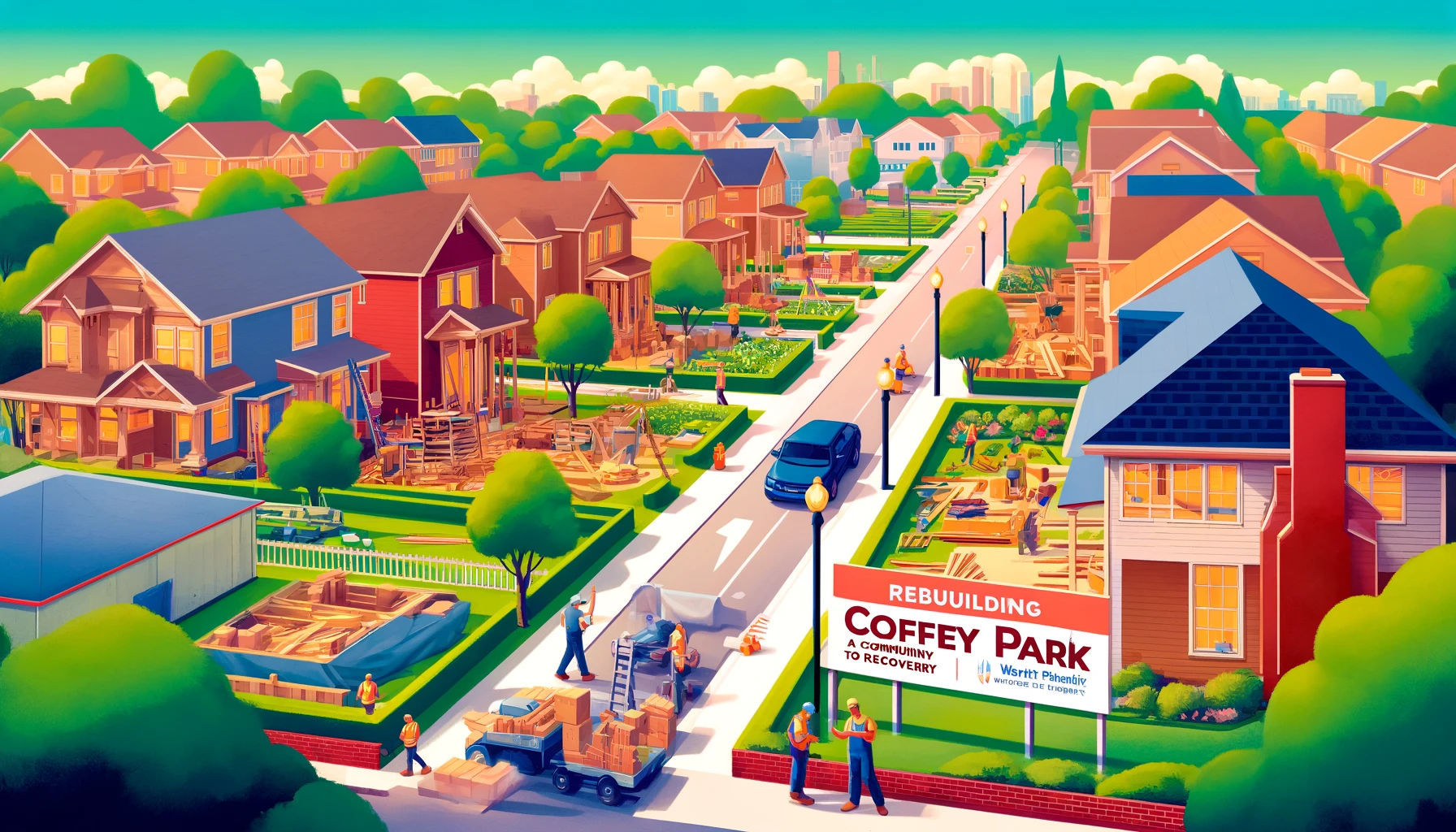Coffey Park, once a vibrant neighborhood in Santa Rosa, California, faced unprecedented devastation due to the wildfires that swept through in October 2017. This article delves into the journey of Coffey Park’s recovery, detailing the challenges faced and the steps taken towards rebuilding a stronger, more resilient community.
What Happened to Coffey Park?
Coffey Park was known for its peaceful streets and family-friendly atmosphere. However, the wildfires of 2017 changed everything. Homes were reduced to ashes, and the landscape was left scarred. Residents were forced to flee, leaving behind memories and belongings. The fire did not discriminate, consuming everything in its path.
How Many Homes Were Affected?
It is estimated that approximately 1,500 homes in Coffey Park were destroyed by the fire. The rapid spread of the flames left little time for residents to safeguard their properties or salvage their belongings, resulting in nearly complete destruction of the neighborhood.
Chronology of the Fire
The fire reached Coffey Park in the late hours, with most residents having only minutes to evacuate. The speed and intensity of the fire, fueled by strong winds, made it impossible for firefighting efforts to curb its advance initially.
Geographic and Historical Context of Coffey Park
Understanding where Coffey Park sits geographically and its historical significance can provide insights into why the impact of the wildfire was particularly profound in this area.
Location of Coffey Park in Santa Rosa
Coffey Park is located in the northern part of Santa Rosa, a city in California’s Sonoma County. This area is characterized by its residential neighborhoods interspersed with commercial developments and significant natural vegetation, which contributed to the rapid spread of the wildfire.
Why Coffey Park’s Recovery Is Significant
The recovery of Coffey Park is a testament to the strength and resilience of its residents. Rebuilding efforts began almost immediately, with the community coming together to support one another. Local government and organizations also played key roles in providing resources and assistance to help residents navigate the complex process of rebuilding.
Community Support and Initiatives
One of the first steps in the recovery process was clearing the debris and ensuring the area was safe for rebuilding. This massive effort required coordination between various government agencies and private contractors. Following the cleanup, residents began the slow process of rebuilding their homes.
Local community groups and nonprofits have been instrumental in supporting Coffey Park’s residents. These organizations provided emotional support, financial assistance, and guidance on the rebuilding process. Community events and meetings became a regular occurrence, offering a platform for residents to share their experiences and challenges.
Planning and Rebuilding
Rebuilding Coffey Park involved careful planning to ensure that the new structures would be safer and more fire-resistant. This included using fire-resistant materials and designing landscapes that could help protect homes from future fires. The city also updated its building codes and regulations to support these changes.
Local architects and builders were actively involved in designing homes that not only met these new standards but also reflected the needs and preferences of the residents. The goal was to restore the neighborhood’s charm while enhancing safety features.
Rebuilding Efforts: Coffey Park’s Resilience in Action
Following the devastation, the residents of Coffey Park and the broader Santa Rosa community began the process of rebuilding, showcasing remarkable resilience and unity.
Are Residents Rebuilding?
Rebuilding efforts in Coffey Park started shortly after the fires. Residents, supported by local government initiatives and numerous nonprofits, began the arduous task of clearing debris and planning new constructions with enhanced safety measures.
Challenges and Progress in Reconstruction
Rebuilding Coffey Park has not been without challenges. Issues such as insurance disputes, contractor shortages, and regulatory changes have slowed progress. However, the community’s determination has led to significant strides in reconstruction, with many families returning to newly built homes that adhere to stricter safety standards.
Financial and Construction Considerations
The cost of rebuilding has been a critical aspect of Coffey Park’s recovery. Understanding these financial elements helps in grasping the broader economic impact of the wildfires.
Cost of Home Construction in Coffey Park
The average cost of constructing a new home in Coffey Park post-wildfire has varied, with prices generally ranging from $300 to $400 per square foot. This includes enhancements in fire-resistant materials and landscaping designed to mitigate future fire risks.
The Broader Impact of the Wildfire on Coffey Park
The fire that engulfed Coffey Park was part of a larger series of fires across California that year, highlighting broader environmental and safety challenges.
What Fire Involved Coffey Park?
The Tubbs Fire, which was one of the most destructive in California’s history, was responsible for the damage in Coffey Park. It raised important questions about urban planning, emergency preparedness, and climate change impacts on fire frequency and intensity.
Why Did Coffey Park Burn?
Factors contributing to the destruction included the neighborhood’s location, environmental conditions like drought, and the presence of combustible materials and vegetation around properties. These factors, combined with high winds, created perfect conditions for the rapid spread of the fire.
How the Landscape of Coffey Park Has Changed
Today, Coffey Park stands as a symbol of resilience and renewal. New homes have risen from the ashes, each telling a story of recovery and hope. The neighborhood has new parks and green spaces, designed to bring the community together and offer peaceful retreats.
Educational programs about fire safety and prevention are now part of community activities. These programs aim to equip residents with the knowledge they need to protect themselves and their homes from future disasters.
Economic Impact and Future Prospects
The rebuilding of Coffey Park has had a significant economic impact on Santa Rosa. The construction industry saw a boom, creating jobs and boosting local businesses. As new homes were built, property values began to stabilize, and the local economy started to recover.
Looking forward, Coffey Park is set to grow and thrive. Plans for community development include more than just rebuilding homes; they also encompass creating a sustainable and vibrant community where safety and beauty go hand in hand.
Conclusion
The story of Coffey Park is one of destruction and rebirth. It highlights how a community can come together in the face of adversity and rebuild with a vision for a safer and brighter future. As Coffey Park continues to grow and evolve, it serves as a beacon of hope and resilience, reminding us of the power of community and the importance of preparedness.



